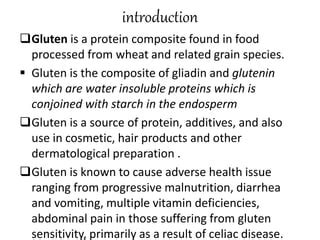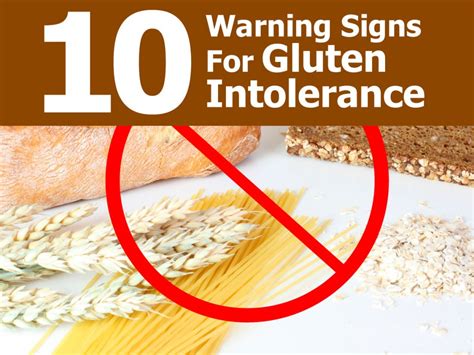Intro
Discover 7 common foods with gluten, including wheat, barley, and rye, and learn about gluten-free alternatives, gluten intolerance, and celiac disease management.
The importance of understanding gluten and its presence in various foods cannot be overstated, especially for individuals who suffer from gluten intolerance or celiac disease. Gluten, a protein found in certain grains, can cause a range of health issues, from mild discomfort to severe reactions. As awareness about gluten sensitivity grows, so does the demand for clear, concise information on which foods contain gluten and how to manage a gluten-free diet. This article aims to delve into the specifics of gluten, its effects, and most importantly, to highlight 7 common foods that contain gluten, helping readers make informed dietary choices.
For those new to the concept of gluten, it's essential to understand that it's not just about bread and pasta. Gluten is found in various grains and products, making it crucial to read labels and ask questions when dining out. The health implications of consuming gluten when intolerant can be significant, ranging from digestive issues to long-term damage of the small intestine. Therefore, identifying and avoiding gluten-containing foods is paramount for maintaining good health.
The journey to a gluten-free lifestyle begins with education. Knowing which foods to avoid and understanding the hidden sources of gluten can make all the difference. From everyday staples to specialty items, gluten can be found in a wide array of products. This article will guide readers through the process of recognizing gluten in common foods, providing them with the tools necessary to navigate a gluten-free diet with confidence.
Introduction to Gluten

Understanding Gluten Sensitivity
Gluten sensitivity is a condition where individuals experience symptoms similar to celiac disease but without the same level of intestinal damage. Symptoms can include abdominal pain, diarrhea, fatigue, and joint pain. While the exact mechanisms are not fully understood, it's clear that avoiding gluten helps alleviate these symptoms, improving the quality of life for those affected.Common Foods Containing Gluten

- Bread: Most types of bread, including white, whole wheat, rye, and sourdough, contain gluten unless specifically labeled as gluten-free.
- Pasta: Traditional pasta is made from wheat and, therefore, contains gluten. However, many brands now offer gluten-free alternatives made from rice, quinoa, or corn.
- Cereals: Many breakfast cereals contain gluten, especially those made from wheat, barley, or rye. Always check the ingredient list for gluten-free certification.
- Beer: Most beers are made from barley, which contains gluten. However, there's a growing market for gluten-free beers made from alternative grains like rice or corn.
- Baked Goods: Cakes, cookies, muffins, and pastries typically contain gluten due to the wheat flour used in their preparation. Gluten-free baking is becoming more popular, with many recipes and products available.
- Sauces and Gravies: Some sauces and gravies may contain gluten due to the use of wheat flour as a thickening agent. Always check the ingredients, especially in restaurant settings.
- Processed Meats: Some processed meats, such as hot dogs and sausages, may contain gluten due to added fillers or seasonings. It's essential to read labels carefully or opt for gluten-free alternatives.
Reading Labels and Dining Out
Navigating a gluten-free diet requires vigilance, especially when shopping or dining out. Reading food labels carefully is crucial, looking for certifications like the Gluten-Free Certification Organization (GFCO) or the Celiac Support Association (CSA). When dining out, inform your server of your gluten intolerance to ensure that your meal is prepared safely.Managing a Gluten-Free Diet

- Eat a variety of foods: Focus on whole, unprocessed foods like fruits, vegetables, lean proteins, and gluten-free grains.
- Read labels carefully: Always check the ingredient list for gluten-containing grains.
- Explore gluten-free products: Many brands offer gluten-free alternatives to traditional foods.
- Plan ahead: When dining out, research the restaurant beforehand to ensure they have gluten-free options.
Nutritional Considerations
A gluten-free diet can be nutritious and balanced with proper planning. However, it's essential to be aware of potential nutritional deficiencies, such as fiber, iron, and B vitamins, which are often found in higher quantities in gluten-containing grains. Incorporating a variety of gluten-free whole grains, along with fruits, vegetables, and lean proteins, can help mitigate these risks.Living with Gluten Intolerance

Support and Community
Finding support and community can be incredibly helpful for individuals living with gluten intolerance. Joining support groups, either online or in-person, can provide valuable resources, recipes, and advice from others who understand the challenges and benefits of a gluten-free lifestyle.Conclusion and Future Outlook

Final Thoughts
Embracing a gluten-free lifestyle is a journey that requires patience, knowledge, and sometimes, creativity. By understanding which foods contain gluten and how to navigate a gluten-free diet, individuals can take control of their health and well-being. Whether you're just starting out or have been living gluten-free for years, the key to success lies in education, support, and a commitment to your health.What is gluten, and where is it found?
+Gluten is a protein composite found in wheat, barley, and rye. It's commonly found in bread, pasta, cereals, and many processed foods.
How do I know if I have gluten intolerance?
+Common symptoms of gluten intolerance include abdominal pain, diarrhea, fatigue, and joint pain after consuming gluten. Consult a healthcare professional for a proper diagnosis.
Can I still eat out if I'm gluten intolerant?
+Yes, many restaurants now offer gluten-free options. Inform your server of your gluten intolerance, and they can guide you through the menu to ensure your meal is prepared safely.
We hope this article has provided you with valuable insights into the world of gluten and gluten-free living. If you have any questions, experiences, or tips to share, please don't hesitate to comment below. Sharing your story can help others feel less alone in their journey and might even inspire new recipes or strategies for managing a gluten-free diet. Let's build a supportive community that thrives on knowledge, empathy, and the pursuit of health and wellness.
